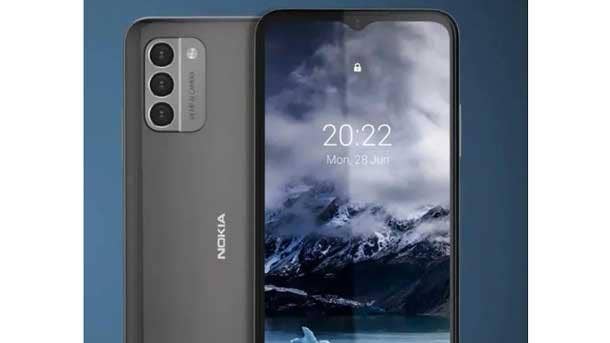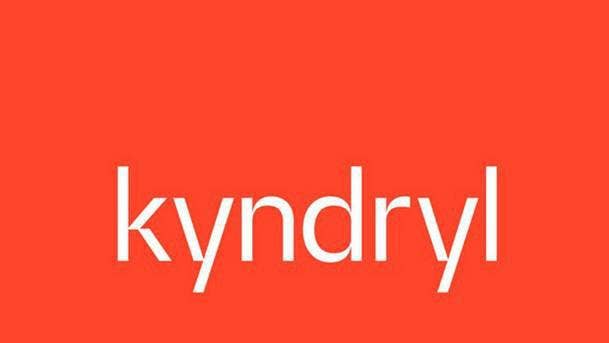Kyndryl Edge Practice Leader: We Give Customers ‘The Complete Toolset Of Technologies’
‘At Kyndryl, we’ve had a lot of conversations between myself and those two other practice leaders about how we really have a good opportunity to approach the customer in a way that not many companies can,’ Paul Savill, Kyndryl’s global practice leader for networking and edge computing, tells CRN in an interview.

Only four months on the job as Kyndryl’s global practice leader for networking and edge compute, and Paul Savill already has grand plans for how the IBM spin-off can dominate the space.
The former senior vice president of product management and services at Lumen Technologies views Kyndryl’s various practice areas and bringing them together for customer services as the way to outdo the competition.
“At Kyndryl, we’ve had a lot of conversations between myself and those two other practice leaders about how we really have a good opportunity to approach the customer in a way that not many companies can,” Savill told CRN in an interview. “When you combine our security practice capabilities with our cloud practice capabilities and our networking and edge practice capabilities, we can really create these tightly managed and complete solutions for customers that can really simplify the amount of integration that they have got to do between all these different technology areas that have to coexist.”
[RELATED: IBM ‘A Different Company’ Post-Kyndryl, With Bets On Red Hat, Automation, Consulting]
And although Savill missed Kyndryl’s time as a managed infrastructure services business within IBM, he sees the newfound ability to expand partnerships and explore technologies outside of IBM as a value add. This week, the company announced a new partnership with Nokia around 5G and edge technologies. The company has also announced partnerships with cloud providers Microsoft and Google Cloud.
“The tie was so tight to IBM that it was like we majored in IBM technology, and so this other stuff that was out there was interesting, but we weren’t permitted to explore and seek that stuff out and innovate with that technology,” Savill said. “But all that’s changed now. And so there’s a real desire in the company to be innovative, to look outside the company’s capabilities at emerging things.”
Here’s what else Savill had to say to CRN about Kyndryl’s growing edge practice.

What’s this new partnership with Nokia?
What we’re rolling out is a turnkey, private 5G wireless solution for customers. So in order to do that we’ve teamed with Nokia on the technology front. But what we’re doing is we’re, we’re basically wrapping the whole capability with consulting services, engineering, design work and ultimately managed services if that’s what the customer would like us to do.
Nokia’s private wireless technology forms the core of the technology solution overall. It’s the NDAC version of Nokia, which is kind of like a cloud-based version that’s really lightweight, well well-designed to go on an enterprise premise.
And what we’ll do is kind of take the whole project on for the customers because the enterprise customers, their IT staffs are generally are not very familiar with 5G wireless technology.
It’s a little bit more complicated to deploy than deploying a Wi-Fi solution on a campus environment or a venue or factory environment.
To leverage 5G services, you have to have spectrum. And that spectrum, you can’t just go pick any spectrum you want and start using it. You have to acquire the spectrum from a service provider or there’s portions of the spectrum that are also available that the government makes available for anybody that needs to use it. But they have to reserve it so there’s a reservation process for that.
So what we’ll do as part of our service is go on site, analyze the environment, find out what spectrum is available that could be used, acquire the spectrum for the customer or reserve the spectrum for the customer. We’ll do the physical facility design. So we’ll figure out where antennas need to be placed, depending upon the use cases that they want to support.
We’ll figure out where to place the technology. We’ll set up the edge compute environment. If they’re doing a factory implementation where they have a lot of data analytics that’s coming in, tons of information that’s coming in from the wireless network, or they’re using a lot of IoT, we’ll do that IoT integration for them on the edge stack.
We’ll provide capabilities around AI (artificial intelligence) analytics, if that’s something that they’re interested in or help them apply machine learning tools to analyze the information coming in like from robotics or something in a factory environment.
We will make sure that the whole network is secure. We will do the integration of the wireless network with their local area network. We will integrate it with their wide area network. We will make it work with the new SD-WAN technology, SASE networking technologies if need be, if that’s the path they want to go down.
We’ll also provide and advise them around cloud networking services that need to tie into this.
So there are many instances where customers are doing data collection through the private 5G network and they want to do some part of the analysis in the cloud or they want to store certain parts of the data in their cloud resources. And so whoever their preferred cloud service provider partner is, then we can help them securely get all that data to that landing place that it needs to go in their public cloud of choice.
We’ll do all these things, basically integrate all the technology together, make sure that it works for them.
And in the end, if they want us to manage it for them, that wireless network on site, then we’re perfectly capable of doing that.
As part of our alliance with Nokia, the solution that we worked out, we have taken a lot of the operational tool sets that that Kyndryl has built in supporting customers and we’ve integrated to Nokia’s cloud solution through an API so that we can take a lot of that telemetry data and the information that they’re collecting through the wireless network and process it through our cloud and lay on additional data analytics and network monitoring, predictive failure analysis, additional tools like that.
And give the customer a portal so that they can log in, they can see tons of information, they can be as involved in the management as they want to they could completely use our tools to manage it themselves. Or they can just basically be the co-pilot or the person sitting in the seat next to the driver and log in whenever they want to but have us do all the management and help them find faults and fix faults proactively.

In these early days of Kyndryl, what other partnerships have helped you build out the edge and networking practice?
The ones that we did with the major cloud service providers are pretty important.
In particular, Nokia and Microsoft had done some things where they’ve done some additional integration between the Azure edge stack and Nokia. We’re not incorporating any of that work yet, but that’s another iteration of improvement that we’re going to continue to do.
So in the situations where Nokia has worked with some of these cloud service providers and laid out some additional tooling capabilities or analytics capabilities, we’ll be adding those to our service as we go along.
Another iteration that you’re going to see down the road here – this 5G piece is part of a bigger strategy that we have around creating more integrated industry solutions.
And so one of the things that we’ll be building out as a next step here is to pre-certify a lot of IoT tooling, IoT management systems that will that will integrate with the 5G network and also integrate with an edge compute stack that will standardize across all of those technologies so we can make it easy for customers in particular sectors to have the complete toolset of technologies that they need to do a nice, rapid, cookie cutter implementation across many locations.
We’ve already been working with the ecosystem around the IoT space and in the industrial sector and lining up the folks that we think make a good fit and are complementary to each other so that we can put all the pieces of the puzzle together for our customers.

What verticals are you targeting with this partnership?
The industrial sector is the one that we’re targeting first. It’s probably an obvious answer, but it’s the No. 1 vertical for IoT and 5G. … We’re already deploying this in Dow chemical plants now. And they’re expanding the program around the world. We’re hopeful that we’ll have this deployed in over 100 chemical plants here over the next year.
They (Kyndryl) did a lot of analysis around this space and said, ‘Hey, there’s a lot of synergy between these technologies, how they’re converging and coming together.’ … We also have a practice around cloud, and we have a practice around security … In the Venn diagram, there’s an overlap between network and edge and the cloud business and there’s one between network and edge and the security business and then there’s one that’s between all three of those businesses, the spot in the middle.
At Kyndryl, we’ve had a lot of conversations between myself and those two other practice leaders about how we really have a good opportunity to approach the customer in a way that not many companies can really legitimately do that by saying when you combine our security practice capabilities with our cloud practice capabilities and our network and edge practice capabilities, we can really create these tightly managed and complete solutions for customers that can really simplify the amount of integration that they have got to do between all these different technology areas that have to coexist.
Do you see opportunities in the midmarket for these services?
Kyndryl’s existing customer base is really made up of large enterprises. Over 4,000 enterprises around the world. We’re very global in footprint, but it is heavily weighted on the large enterprise side.
We’re beginning these conversations with the technologies I’m talking about with that customer base. We’ll see how far down we get with it with new logos and as we start to expand it.
But I don’t mean to say that there’s no opportunity in the medium-sized area. I think that there is. It’s just that for Kyndryl, that’s our natural space to begin with.
How’s spending in the industrial space for these types of services?
There’s a general consensus amongst those of us that are flopping around in this corner of the world that actually COVID really accelerated the desire of companies and the need of companies to deploy services like this.
A lot of funny stories out there about how quickly people had to react, how the ones that were already down the road and doing some of this stuff really lucked out, so to speak, from COVID and how others were really caught flatfooted and are racing to catch up.

How about the competitive landscape for Kyndryl in edge?
We do have a couple of competitors in this space. I am loath to name them but it’s funny because I was a customer of these companies at my former job (Savill came to Kyndryl after more than four years with Lumen Technologies, formerly CenturyLink).
If Kyndryl had been around and doing what we’re doing right now, in my former job, I know that I would have rather gone to Kyndryl and trusted Kyndryl for something like this more than I did the competitors that we have.
What I did at the former company, I wound up still piece-parting a lot of it together myself because it didn’t really feel like those competitors had their act together in providing a turnkey solution.
That’s what I hope that Kyndryl really establishes. We’ve got a chance to be a market leader in this space. We’ve got a lot of things going for us. We have huge customer trust in our existing base, great NP (net promoter) scores with our existing customers who just really trust us to run critical infrastructure.
And certainly this edge compute and 5G stuff is critical infrastructure. From what we’re seeing, when you’re running factory equipment, when you’re running chemical plants and doing safety in chemical plants, you can’t have disruptions. Things blow up if you screw up.
The enterprises place a lot of trust in their service providers in this area, and Kyndryl has that going for them.
Sometimes companies when they launch a service, the core is good but, boy, it gets really fuzzy around the edges. And that’s where the customer winds up having to do a lot of work. And Kyndryl has the capabilities to take care of the edges as well as the core thing.

Where is it easiest to create a turnkey solution? Where’s it hardest?
It’s easy to roll out component-type services where you’re taking one particular technology and saying, ‘OK, we’re going to integrate that into our back office.’
We’re going to create service wrappers around that, management tooling around that, support structures around that, deployment design capabilities around that.
Where it gets really hard is – the customer never comes to us and just generally says, ‘I just need an SD-WAN service. Help me with my SD-WAN service.’
No, it’s a bigger problem that they’re trying to solve. They’ve got a bunch of legacy network infrastructure. You can say, ‘We support (VMware’s) VeloCloud, we’ve got good capabilities around VeloCloud, we will help you roll out a VeloCloud SD-WAN service and we can tie their Carbon Black solution in it and make it easy for you to do and we’ll manage it for you.’
But that’s not the problem. The problem is that they’ve got this legacy network of IP, VPNs and private lines and Ethernet circuits and stuff that they’ve got hanging out there.
They’re not gonna carry both of those. So they don’t want you to just deploy their SD-WAN. They want you to transform that old network. And then that gets into the hairy problem of all this legacy stuff – legacy records, bills, contracts that are scattered all over the place with different term schedules.
It’s the business issues that really make it hard. It’s not the technology. That’s where Kyndryl kind of shines. … You go to these startup companies that are really cool with the new technology stuff, even a company like VMware, they’re happy to go and sell you their cool new VeloCloud-SASE combo service, but they’re not going to touch that legacy stuff with a 10-foot pole. Not even a 20-foot pole. At Kyndryl, we’ve seen so much it just didn’t scare us anymore. We’ve seen it all. We’ve managed it all.

What technology are you excited to explore?
Kyndryl, with the separation from IBM, the tie was so tight to IBM that it was like we majored in IBM technology, and so this other stuff that was out there was interesting, but we weren’t permitted to explore and seek that stuff out and innovate with that technology. But all that’s changed now. And so there’s a real desire in the company to be innovative, to look outside the company’s capabilities at emerging things. … There’s some cool stuff that we’re starting to work with that involves spinning up virtualized compute resources on the fly with virtualized network resources, with virtualized security services and orchestrating all that together across a global platform where we can just dynamically move things between different clouds.
The ability to distribute applications and content on the fly based upon demand pools by time of day, build algorithms that are optimizing the cost structure but balancing the things between performance and the cost that you’re willing to pay. We’ve been looking at some really neat stuff on that front as part of the network and edge business.